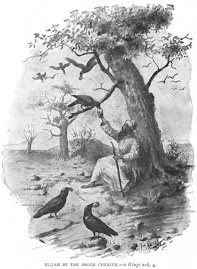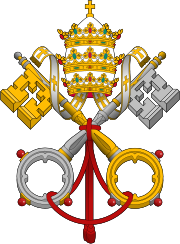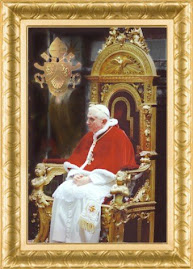 Today and through the rest of this week, we will continue reading of the lecture given by Bl Titus Brandsma O.Carm during his American lecture tour before WW2 on the subject of Carmelite spirituality and contemplative life of prayer as exemplified by St Elijah. The lecture is in practice excellent summary of the history and development of the Order and can profit those interested in Carmel history and spirituality to increase their knowledge and understanding of the spiritual richness of one of the greatest mendicant orders dedicated to Our Lady.
Today and through the rest of this week, we will continue reading of the lecture given by Bl Titus Brandsma O.Carm during his American lecture tour before WW2 on the subject of Carmelite spirituality and contemplative life of prayer as exemplified by St Elijah. The lecture is in practice excellent summary of the history and development of the Order and can profit those interested in Carmel history and spirituality to increase their knowledge and understanding of the spiritual richness of one of the greatest mendicant orders dedicated to Our Lady.Harmony of Intellectual and Affective Prayer - Happy Mean Finally, we must note the providential combination of the two great visions of the Prophet on Carmel and on Horeb. These two visions are intimately connected. The last is the crown of the first and supplies what was not yet given in the first. While we admire Elias as he soars aloft in contemplation on Carmel, we must not forget that he had a human side as well and on this side he is accessible to the very least among us. He had called down fire on Carmel and rain on the parched land, yet Jezabel, unrelenting in her evil, held Achab and his people in her thrall. She was all powerful and eager for revenge. And Elias, overcome with fear and disappointment, poured out all the misery of his soul to God: "It is enough, Lord, I pray You, take away my life." In this connection we can hardly exaggerate the profound importance of God's revelation to Elias on Horeb. We should like to remark that the vision of Elias on Carmel bears the character of an enlightenment of the mind, an intellectual revelation, the disclosing of a mystery, the mystery of the Incarnation. It is true that in this vision on Carmel there is not wanting a certain affection or attraction of the will, for we see the Prophet, under its impulse, borne before Achab to the capital town of Samaria. But this attraction, this affection of will, is of little importance in this vision. Above all, it is the communication of a mystery. In the vision of Horeb, however, the Prophet felt the spirit of God. The first vision was, in the strict sense of the term, intellectual, the second the breathing of the spirit of God. The latter completes the former. After the first, the Prophet, even though his mind was illumined from on high, was still subject to weakness and despondency, and prayed that he might die. In the second, he is strengthened and consoled and at peace. These visions are intimately connected. So in the school of Carmel there is harmony between the intellectual illumination of the mind and the affective love of the heart. While the schools of St. Bernard and St. Francis are schools of love, seraphic love, and the Dominican, intellectual, the school of Carmel achieves a happy mean, a harmony of both. Surely those who dwell in Carmel would have caught from the flame a spark of the love and zeal which burned in the great Prophet. Fire is the most expressive symbol of love. "I am come to cast fire on the earth." It is this fire which enveloped Elias when, according to the witness of Scripture, he was taken up to heaven in a fiery chariot. Wrapped in that seraphic flame he is taken from earth. Carmel must ever feel that glow of its founder's zeal. It is the mark of the true follower of Elias. It burns in all Carmelite saints. Especially do we see it in the soul of seraphic St. Teresa of Avila. The smouldering fires that burned in the soul of "this undaunted daughter of desires" is Carmel's greatest witness to the spirit of Elias. In these great souls have been fulfilled the Prophet's words which encircle the Order's escutcheon "With zeal I have been zealous for the Lord God of Hosts." But the school of Carmel warns us, in its leading figures, even in the Prophet Elias, that we must never forget the great importance of the intellectual foundation of the contemplative life: the enlightenment of the mind, the exercise of all mental faculties. By the imaginative and intellectual meditation and contemplation we have to climb to the affection of love and to be set in fire and flame. Even the Mystical Doctor -- as we shall see later in a following lecture -- recalls the necessity of imaginative and intellectual meditation, because we cannot always soar into the higher regions of mystical life. And St. Teresa, insisting on the affection of love, leads her sisters on the way of imaginative and intellectual vision and meditation. We should like to speak also about the apostolic character of the life of the great prophet, but his position in the Old Testament is clear enough to illustrate the zealous apostolic spirit by which he was led. Following this spirit also Carmelite life has always been apostolic. We will see in the next lecture and especially in the last the apostolic character of Carmelite spirituality. We mention this apostolate here to indicate that also in this life the life of the prophet of Carmel was stimulating and inspiring even to the highest ideal of the apostolate.



























